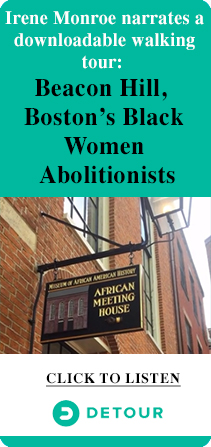
By Rev. Irene Monroe November 9, 2020
The struggle to get President-elect Joe Biden over the finish line with at least 270 electoral college votes was an unquestionably epic battle.
However, Biden’s battle wasn’t the century-long one it was for women, who earned the right to vote in 1920 with the 19th Amendment — hoping a female would one day be elected to one of the highest offices in government. The fact that Vice President-elect Kamala Harris broke through the “18 million cracks” in the glass ceiling in 2020 is both exciting and inexcusable.
The news announcing Harris as the country’s next V.P. had some of my sister-friends verklempt, struggling to contain their tears, as many of us saw with CNN commentator Van Jones. Some of us gathered to celebrate and shout “Mamala in the house!” and” Madame Vice President!” as we drank too much Jamaican rum punch and danced socially distanced to the Reggae sounds of Jimmy Cliff and Bob Marley and the Wailers, honoring the Jamaican part of Harris’ heritage.
Harris’ ascension to the vice presidency, sadly, represents several underrepresented demographic groups in U.S. politics. She represents many firsts: woman, Black, Indian American, child of immigrants, HBCU graduate. And if there are more, forgive me.
The first time a woman was nominated by a major national party to run for one of our government’s top spots was the vice president’s office. In 1984, Queens Rep. Geraldine Ferraro was then-Democratic presidential hopeful Water Mondale’s running mate. The daughter of Italian immigrants, Ferraro, like Harris, represented many firsts: woman, Italian American, and feminist. “We’ve come too far on the path to equality, we can’t let them turn us around now,” is one of Ferraro’s famous quotes.
Reflecting on Harris’ win and her mother’s struggles with blatant sexism during her run for the vice president spot, Donna Zaccaro, Ferraro’s daughter, who in 2013 produced the documentary “Geraldine Ferraro: Paving The Way,” shared her thoughts with NY1:
“I do see it as a continuation of my mother’s legacy. Even though in that campaign she lost, and in a landslide … how she conducted herself during that campaign proved that a woman could be VP of the U.S. or even president. … This time around, Kamala Harris — her credentials weren’t even questioned,” Zaccaro is quoted as saying in the interview.
Twenty-four years would elapse before the next woman was nominated to run as a vice presidential candidate: former Alaska Gov. Sarah Palin in 2008. Palin ran on the Republican ticket with then-presidential hopeful Arizona Sen. John McCain. Palin was the first female Republican nominee and second woman nominee ever. I surmise there is some consolation to know that the time between Palin and Harris running for vice president took half the time between Ferraro and Palin — 12 years. Elated to see a woman finally win the spot, Palin gave Harris a shout-out on Instagram, conveying her good wishes:
“Congrats to the democrat V.P. pick. … Climb upon Geraldine Ferraro’s and my shoulders, and from the most amazing view in your life consider lessons we learned,” Palin wrote. Don’t “forget the women who came before you,” she added.
But the woman who first paved the way for women and other underrepresented demographic groups in U.S. politics to step into the political arena was Rep. Shirley Chisholm. I grew up knowing Chisholm. We kids call her Mrs. C, as she represented my Brooklyn Congressional District for seven terms from 1969 to 1983. She was known throughout the neighborhood and the halls of power in New York City as a force to be reckoned with who was “unbought” and” unbossed” — also the title of her 1970 memoir.
In 1972, Chisholm was the first woman and person of color to run for president. On the Democratic ticket, she paved the way for others. In her 1973 book, “The Good Fight,” Chisholm shared why she ran.
“I ran for the presidency, despite hopeless odds, to demonstrate the sheer will and refusal to accept the status quo,” she wrote. “The next time a woman runs, or a black, or a Jew or anyone from a group that the country is ‘not ready’ to elect to its highest office, I believe that he or she will be taken seriously from the start. … I ran because somebody had to do it first.”
Black women have paved the way for women and other underrepresented demographic groups in U.S. politics, too. As a voting bloc, we are the DNC’s strength, and we know the paths we’ve paved for others. We take pride in our agency and voting-mobilization strategies to help candidates like Barack Obama and now a Biden/Harris team to get to the finish line. And we celebrate these achievements.
This 2020 presidential race has been an epic battle to win back our multicultural democracy. This weekend, my sister-friends and I will gather again to celebrate. This time Diwali, an Indian festival of lights, symbolizing the triumph of light over darkness. It’s a timely celebration to embrace the new direction the country will be going in, and to honor the Indian part of Harris’ heritage, too.



